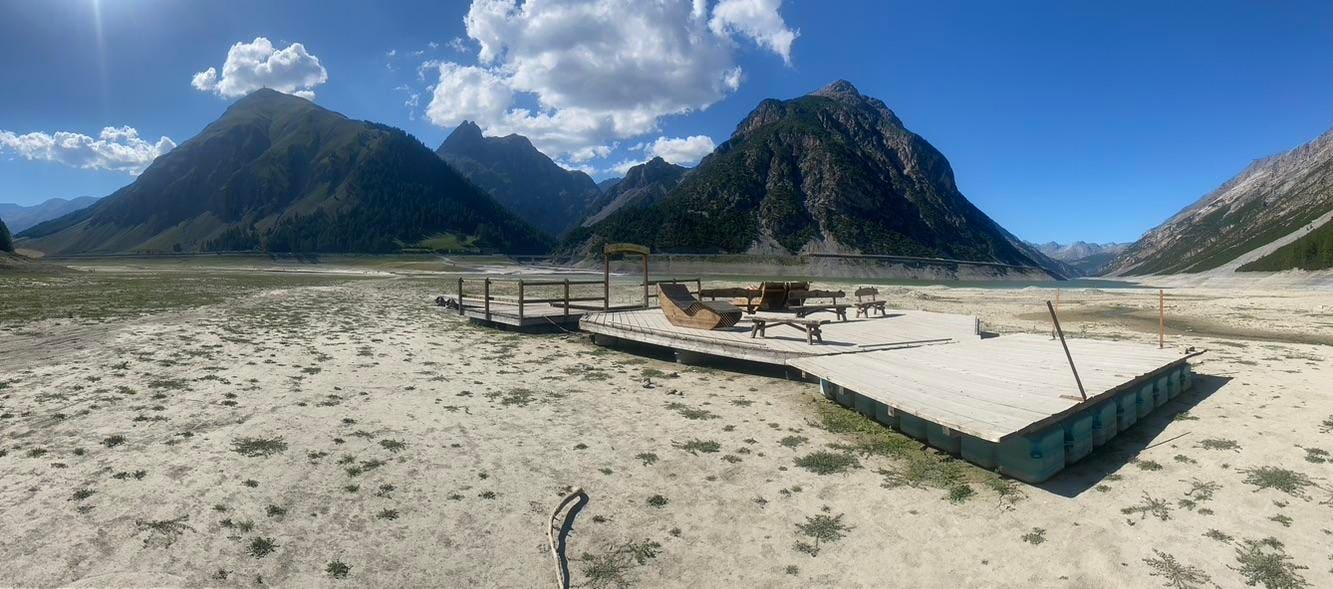Drought in the Po River Valley, Italy’s largest agricultural area.
Paul Behrens
“This transition is going to happen one way or another,” said Paul Behrens, British Academy Global professor at the University of Oxford. Behrens studies food systems at the Oxford Martin School, where his research focuses on modeling how producers and consumers interact through trade, and how structural reforms might increase the resilience of global food supply chains.
Speaking this week at the 2025 Oxford LEAP Conference, Behrens described growing pressures on food systems worldwide. Agriculture is a primary driver of several forms of environmental degradation, including greenhouse gas emissions, biodiversity loss and nitrogen pollution. At the same time, food production is increasingly exposed to the effects of extreme weather, economic shocks and resource constraints.
Evidence of these pressures continues to accumulate. Earlier this year, flooding in Australia submerged an area larger than the United Kingdom. Queensland, which produces almost half of Australia’s cattle, reported major livestock losses. These examples illustrate a wider pattern. Economic assessments at the global scale, including a working paper published by the International Monetary Fund warning about the inflationary effects of climate induced droughts on food prices and a study in the scientific journal Communications Earth & Environment estimating that under global temperature increases projected for 2035 we should expect annual food inflation of 0.92%-3.23%.
Beyond episodic shocks, longer-term structural risks are also becoming clearer. A 2019 study in the journal Agricultural Systems found that the probability of simultaneous crop failures in key agricultural regions increases sharply under 1.5 degrees Celsius and 2 degrees C warming scenarios. Such disruptions, when they affect multiple breadbasket regions at once, pose a growing challenge to the stability of global food trade.
In response to these trends, Behrens argued that a shift toward more plant-based diets is not simply advisable, but likely inevitable. This view is grounded not in consumer preference, but in biophysical constraints and economic modeling. As land, water and energy demands tighten — and as climate disruptions multiply — resource-intensive food systems may simply become unviable at scale. Analyses such as the EAT-Lancet Commission report suggest that dietary shifts can significantly reduce environmental impacts. Work from Behrens’ team adds that such transitions also reduce the land, labor and capital intensity of food production. These factors matter economically: many producers operate with high levels of debt and depend on infrastructure that is increasingly exposed to climate risk — conditions that make the system more sensitive to disruption.
He also emphasized the importance of “policy sequencing” — a strategy in which reforms are introduced incrementally, each lowering the barriers to the next. Examples might include revising agricultural subsidies, adjusting procurement policies, or investing in climate-resilient food infrastructure.
According to Behrens, whether dietary change arrives through deliberate reform or reactive disruption remains to be seen, but it is inevitable. The structural pressures are well-documented, and their effects are already visible in both physical and economic terms. Managing this transition, Behrens suggested, will likely require a long-term policy approach that emphasizes resilience, equity and risk reduction.
From a policy perspective, one implication is clear: failure to anticipate these risks may leave decision-makers with fewer — and more costly — options in the future.
